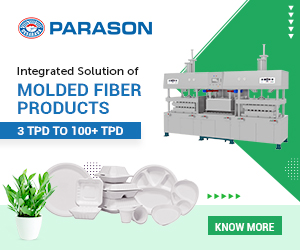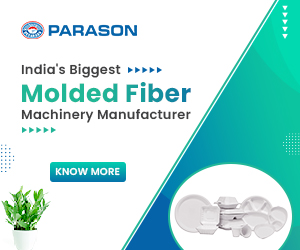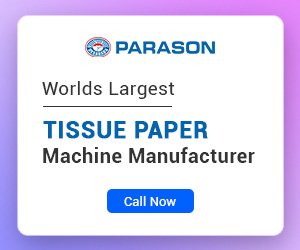The world of molded pulp packaging is changing at a rapid pace, and most firms do not want to be left behind in this transformation. The majority of them are making the leap from the world of plastic packaging to the world of environmentally friendly packaging. This pattern indicates that the green movement will become extremely popular in the following years.
However, the central question is whether or not you should actually switch. Before we look at the pros and cons, let’s have a look at how it’s created.
Explore our detailed research report on Molded Fiber Market. This report is recommended by the experts of the industry.
The manufacturing process for molded pulp packing:
Molded pulp packaging is made by repurposing fibrous materials, particularly natural fibers (wheat straw, bamboo, sugarcane), as well as recycled papers and cardboard. Packaging’s strength, surface roughness, and even color are all determined in part by these materials.
In contrast to cardboard boxes, the packaging is formed from the very beginning of the production process and does not begin with a flat sheet of paper. Its design incorporates complicated 3D elements as well as rounded edges. An egg carton is an excellent example of this type of packaging.
Because of technical developments, the finished molded pulp products now have a more sophisticated appearance, feel, and a smoother surface. These advancements have resulted in its widespread use today, rather than solely restricted to conventional packagings such as end caps and egg cartons.
Due to the increasing importance placed on environmental sustainability, pulp packaging has become an enticing choice. Aside from being made from recycled fibers, it is also recyclable and may be re-used for up to 7 times after it has served its purpose in the first place. If for any reason it cannot be recycled, the molded pulp, in contrast to Styrofoam and plastic packaging, is biodegradable in the environment.
The molded pulp may be distinguished and classified into four varieties based on its characteristic appearance. Thick-Walled – manufactured from a single mold; Transfer Molded – made from a single transfer mold and one forming; Thermoformed – built from numerous heated molds, and lastly Processed – made by a one-of-a-kind or secondary treatment technique.

The advantages of molded pulp packing;
Environment-friendly and long-lasting:
One significant advantage of employing it is that it helps to ensure that the environment is safe. Because of the recycled materials used in its creation, this sort of packaging has a lower carbon footprint than other types of packaging. The production method does not produce significant amounts of carbon dioxide.
It’s made of biodegradable materials:
Is it possible to compost molded pulp? Molded pulp packaging is highly biodegradable, which helps to reduce the environmental impact of packaging. It provides it with a competitive advantage over its plastic cousin. The decomposition and total breakdown of molded pulp packaging can occur within minutes of the package’s use being completed.
It does not contain any toxins or allergies:
The fact that it is biodegradable and made of allergy-free components ensures that it is not poisonous. Traditional packaging is made of petrochemical and synthetic materials, harming the environment and releasing poisonous fumes when exposed to high temperatures.
Reusable molded pulp packing is available:
Once it has reached the end of its useful life, the environmentally friendly components that were utilized to construct it allow it to be recycled. The molded pulp may be recycled to produce additional environmentally beneficial products for use in a variety of different sectors.
Improves the image of pulp packaging suppliers:
Because the majority of consumers are now more interested in environmentally friendly products than they were previously, moving to the molded pulp may have a massive impact on how people perceive your organization or business. According to the company, this has a beneficial influence on its brand image. People will begin to associate your company with non-sustainable items if you continue to utilize plastic products on a regular basis. This might harm your brand’s reputation.

In addition, becoming more environmentally responsible can aid in attracting more clients, particularly those who are environmentally conscientious themselves.
Costs are reduced:
Molded pulp packing is lightweight and takes up less space than other types of packaging. This has the potential to significantly minimize packing waste, hence lowering overhead and shipping costs.
Important Cons of Molded Fiber pulp packaging:
Pulp packing, like any other sector, has its drawbacks as well as its advantages.
It is expensive to switch:
Small firms may find it prohibitively expensive to make the move to environmentally friendly practices. The use of environmentally friendly materials can result in a change in the cost of operations, particularly in the manufacturing process. Even while you are certain to generate cost savings at some point in the future, it is not apparent when that time will occur.
Crop cultivation is required:
Because the molded pulp is produced as a consequence of recycling fibrous materials such as maize, it has been criticized by some who believe that such crops should be utilized to feed the hungry rather than being discarded as a byproduct of industrial production.
Is it really worth it?
After weighing the advantages and disadvantages, we may decide that it is a worthwhile investment. However, it should be noted that molded pulp may only be entirely ecologically benign if it is disposed of in the right manner. It all boils down to a sense of social obligation.


